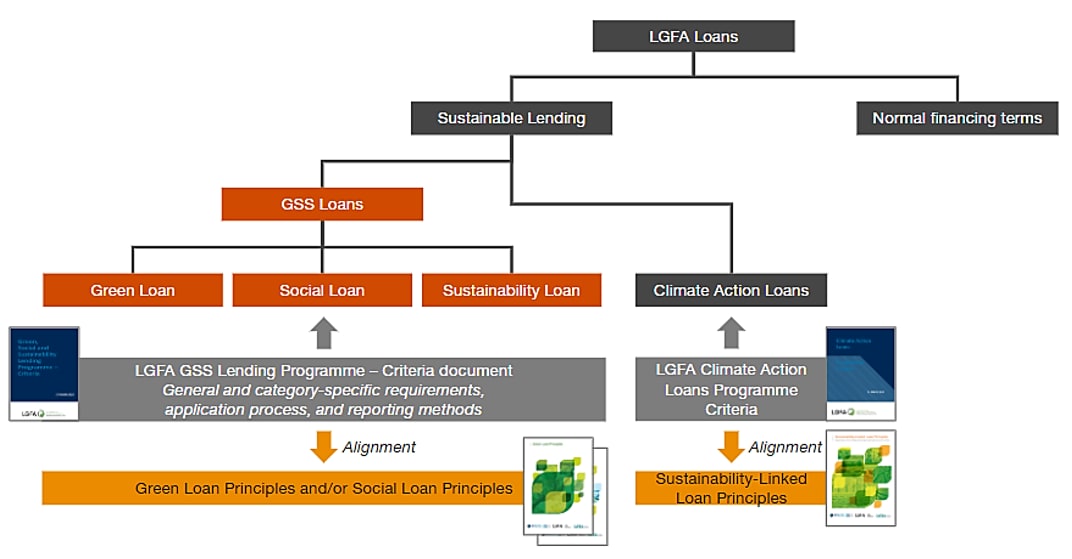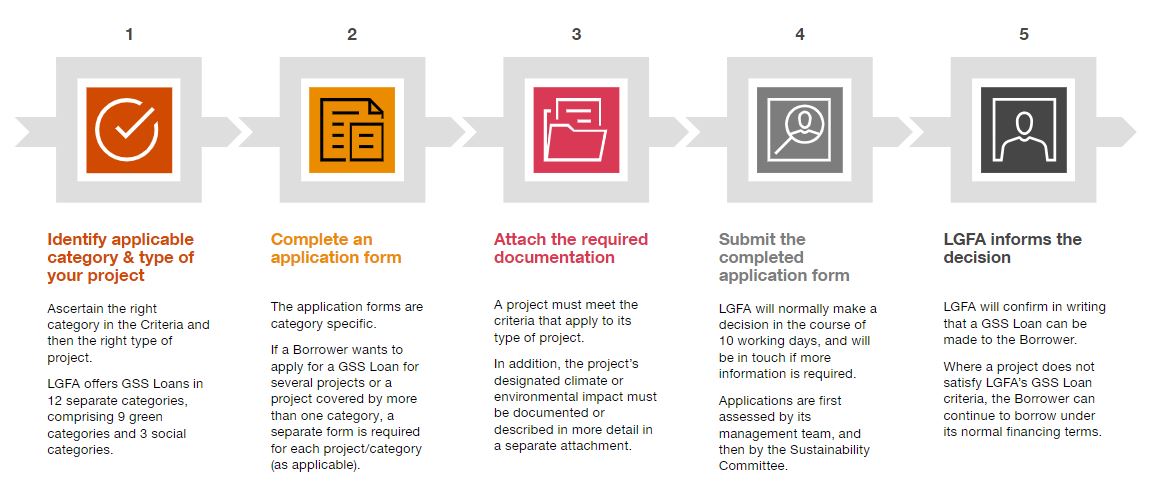Introduction
We are pleased to release our latest Treasury Broadsheet that covers a wide range of corporate treasury topics. In this latest edition, we examine:
- shadow credit ratings and how this approach assists in understanding appropriate capital structures
- how local government treasury managers can best navigate managing risks in uncertain times (although the information in this article is relevant to all treasury managers)
- the progress the local government sector has made on sustainable financing including the process used and transactions completed
- 2023 European Association of Corporate Treasurers (EACT) and the PwC Global Treasury Survey - funding and capital structure management, along with cash and liquidity management, are top priorities.

How PwC New Zealand’s Treasury Intelligence can help you
It is critical for finance teams to use analytical tools to support successful treasury management outcomes, particularly in times of uncertainty.
Treasury Intelligence is an easy-to-use platform designed to help managers of financial risk design their foreign exchange, liquidity, funding and interest strategies, from a trusted risk position, in real-time. It enables finance professionals to:
Create and test different treasury strategies.
Evaluate current and projected risk positions to test policy compliance.
Understand projected cost of borrowing and financial covenant outcomes.
Report to Risk Committees.
The foreign exchange platform will enable you to understand your foreign exchange risk and develop hedging strategies to manage and mitigate your exposures. Treasury Intelligence is available on the PwC New Zealand website where more information can be found including the ability to request a demonstration.
We hope you enjoy this latest edition. Please contact our team using the details below if you have any questions or would like to discuss the articles in this publication further.

Brett Johanson
Partner
PwC New Zealand
Click on the tabs below to learn more.
Using shadow credit ratings as the framework for debt and capital decisions

How should a business make decisions about debt and capital management?
Even at the best of times, organisations should be concerned about their debt capacity and right-sizing their balance sheets. This starts with having a clear and robust approach to making capital management decisions. By doing this, an organisation ensures that it continues as a going concern and has access to sufficient liquidity to meet its near-term obligations. It can make sure that an organisation has access to capital to fund investment opportunities, that capital can be accessed at an attractive and competitive cost, and that optimal returns are delivered to shareholders/beneficiaries.
However, as has been well documented, these are not the best of times - interest rates have risen considerably and macroeconomic conditions have deteriorated over the past three years. This has brought conversations about debt and capital management into sharper focus for many organisations, both globally and domestically. In an environment of high and/or rising interest rates, the nuances of debt and capital management can change, and traditional views can (and should) be challenged.

High-interest-rate environments often coincide with other adverse credit conditions, such as tighter credit availability and/or reduced investor appetite for risk. This can create a refinancing risk if organisations have not managed their debt maturity profiles accordingly. Also, rapidly changing macroeconomic conditions can create and/or highlight a mismatch between an organisation’s internal view and external investors’ views of its debt capacity. It can limit an organisation’s ability to invest and grow.
When the cost of debt is rising so quickly, traditional balance-sheet metrics such as gearing/leverage ratios may be relatively stable, but cash flow and debt serviceability metrics can worsen rapidly, depending on hedging levels and exposure to floating rates. If an organisation is focused solely on traditional, balance-sheet metrics, it will likely be overestimating the strength of its balance sheet and its own debt capacity. Organisations need to have a well rounded view of their debt capacity which incorporates all of the above and be able to adapt to changing market conditions.
Organisations need to ensure that they have a robust framework in place for making debt/capital management decisions. An approach which at PwC we see as good practice, and have recommended to many of our clients, is based on (shadow1) credit rating analysis.
The idea of this approach is to start with a target credit rating outcome and then work backwards to an appropriate debt level and capital structure. A credit rating is an independent assessment of a borrower’s ability to service its debt obligations on time and in full. Credit ratings represent a well understood, well trusted vocabulary for talking about creditworthiness and debt capacity.
What the exact target credit rating outcome is can be chosen to achieve specific financial objectives (for example: financial resilience, access to debt capital markets, improved cost of borrowing etc.) or more broadly, it can be selected to provide a benchmark for the Board’s financial profile and credit risk appetite. Regardless, in our view there are two main benefits to this approach.

First, both formal and shadow credit ratings provide a transparent and independent perspective on an organisation’s financial profile based on well recognised frameworks. This adds credibility to an organisation’s capital management strategy which in turn gives investors and lenders confidence in the business, even (or especially) in a challenging macroeconomic environment. We know from experience with our clients that a well documented (shadow) credit rating can drive constructive conversations with lenders and lead to tangibly improved commercial outcomes.

Second, credit rating-based analysis captures a broad mix of both qualitative/business and quantitative/financial risks. The assessment of financial risk incorporates a wide range of leverage and serviceability metrics to build a comprehensive picture of the organisation’s financial position. As mentioned earlier, this is particularly important in the context of rising interest rates and tighter credit conditions.
Shadow credit ratings are not the same as formal credit ratings. Their mileage may vary depending on the context in which they are used. For example, if an organisation wished to issue debt in the public debt capital markets, a shadow credit rating would not carry the same weight as a formal credit rating and would not be satisfactory for that purpose. However, we have seen examples of private debt lenders valuing them highly.
Nevertheless, for the purposes of debt capacity and capital management analysis, shadow credit ratings offer a well recognised, third-party perspective on an organisation’s debt capacity and capital management strategy. Not only can this validate the organisation’s approach to capital management in the eyes of key stakeholders, it can also provide management with valuable insights, particularly amidst challenging market conditions.
Authored by Samuel White
Back to the tabs
1 Shadow credit ratings are credit assessments provided by independent third parties other than the traditional credit rating agencies, such as Standard & Poor's, Moody's, and Fitch.
Strategic treasury management in uncertain times

The only thing for certain is change, so how can finance managers best position the councils they work for to make the most informed decisions today? How can they retain the flexibility to adjust their treasury position as the uncertain future state unfolds?
In this article we summarise the key considerations for building a strategy that will see finance managers through all manner of financial and economic conditions. It focuses on the local government sector but the principles we cover are applicable to all organisations.
The uncertain economic environment
Currently, uncertainty for ratepayers is accelerating due to a range of economic factors. These include the higher cost of living, increase in borrowing cost, contraction in household balance sheets, and job uncertainty. External factors such as the future of local government, water reform, the Reserve Bank of New Zealand’s ‘watch, worry and wait’ approach to fighting inflation, combined with global growth concerns as well as geopolitical risks, create the patchwork of an uncertain future.
These uncertainties create volatile funding and financial markets, and are amplified by sector planning challenges. This includes the inability to deliver costlier capital programmes, long-term debt forecast uncertainties, the funding of operating deficits and additional liquidity buffer requirements. Proposed rate increases are inconsistent with 2021 Long-term Plans (LTPs) as higher borrowing costs, debt funding requirements and the rising tide of cost increases squeeze the fiscal envelope.
Treasury management approach
In this environment, continuing to stay the course and apply a robust treasury framework is essential. This includes:
- Making Liability Management and Investment Policies (Treasury Policy) the foundation of your approach, supported by timely information from business units.
- Understanding the purpose of the policy is not to beat the market but help smooth council’s transition to the new financial market conditions. It allows time for the council to adjust its operating and capital budgets, and reset its revenue and financing strategy.
- Ensuring your approach provides discipline and removes ‘betting’ on a market view through reducing concentration risks, spreading and smoothing maturities.
- Mandating a minimum portion of fixed rate debt, and enforcing borrowing and liquidity limits is a key principle.
- Enabling pre-funding of debt maturities, to manage known upcoming core debt refinancings and remove some of those upcoming market pricing risks early.
- Utilising flexible risk management instruments, like interest rate swaps.
Treasury strategies for uncertain times
Your strategy should hinge on proactively managing treasury risks, through tailored strategies and effective execution. Key approaches to keep in mind are:
- Protecting your cash and improving cash flow visibility by effective debt and cash flow forecasting.
- Maintaining sufficient liquidity to manage through uncertain challenges.
- Understanding your Council’s credit rating and LGFA financial covenant sensitivities.
- Understanding what is your Council’s liquidity, debt funding and interest rate strategy:
- Scenario test and challenge to understand the impact of critical sensitivities such as policy compliance, LGFA debt capacity and ratings impact. The net interest financial covenants may be more of a constraint over the planning period.
- Provide timely and accurate information to your finance teams.
- Conduct regular treasury conversations with your asset managers and project management team.
- Keeping well informed of the conditions and the impact on your organisation. Part of this means adopting a no surprises policy to ensure key stakeholders are ‘on the same page’. Have conversations early and maintain regular stakeholder engagement (councillors, LGFA, rating agencies, trustees and asset managers).
- Maintaining policy compliance, but adopting a forward-looking strategy will enable you to proactively manage through uncertainty.
It is critical for finance teams to use analytical tools to support successful treasury management outcomes, particularly in times of greater uncertainty. These tools provide the flexibility to understand the magnitude and impact of changing assumptions against key measures such as policy limits, LGFA financial covenants and stakeholder requirements. Some of these themes were mentioned in the treasurers survey article included within this Broadsheet where real-time, accurate information and using visualisations is important to the strategically focused Treasurer.
Authored by Brett Johanson
Orienting local government debt to sustainability outcomes
Local government in New Zealand has been under significant funding pressure, making it challenging to maintain its investment programme in core community services and infrastructure.2 The estimated total infrastructure deficit, both past and future, is nearly NZ$210 billion, NZ$52 billion of which is at the local government level.3
Without significant system-level changes, this challenge is likely to persist. Macroeconomic conditions such as inflation, skill shortages and supply chain challenges, coupled with impacts of extreme weather and the need to build climate resilience, add further pressure. The Review into the Future for Local Government (the “Review”) calls for a sustainable and equitable funding and finance system. While financial sustainability of local government is important, it is equally important to deliver services and sustainability outcomes for local communities.2 This balancing act is where sustainable finance could potentially play a role.

Why is sustainable finance relevant?
Sustainable finance incorporates environmental, social, and governance (ESG) principles into business decisions and investment strategies.4 Based on current market standards, a lot of community services and infrastructure projects would be considered as eligible assets for sustainable finance instruments.
Debt is often used by local governments to finance the capital expenditure of long lived assets and spread the cost across generations.5 This reflects the intergenerational equity principle, where costs are shared by both current ratepayers and future users.6 According to the latest audits of local authorities’ long-term plans (2021 - 31), to meet the significant increase in infrastructure investment, gross debt is forecast to increase from NZ$24.7 billion in 2021/22 to NZ$38.4 billion in 2030/31. It is worth highlighting that this is significantly influenced by Auckland Council's debt, which is forecast to reach NZ$16.3 billion by 2031, representing over 42% of councils' total debt.7
The benefits of qualifying some of these debts as sustainable could be multifold, including:
a wider lender/investor base,
potentially reduced borrowing costs,
demonstrating strong commitments in investing in long-term sustainability, aligning with local sustainable development strategies and disclosure requirements etc.
LGFA’s sustainable lending programs
The New Zealand Local Government Funding Agency (LGFA) was set up to provide more efficient financing costs and diversified financing sources for local authorities and council-controlled organisations (CCOs). LGFA would raise debt on behalf of local authorities on more favourable terms, and then on-lend to local authorities.8
LGFA currently operates two sustainable lending programmes: Green, Social & Sustainability (GSS) Loans9 and Climate Action Loans (CALs).10 The former is primarily based on the types of projects to be financed, while the latter is tied to predefined greenhouse gas (GHG) emission reduction targets (ERTs). Generally speaking, CALs offer flexibility in the use of funds, but require borrowing councils to have GHG emission inventories and emission reduction plans (ERPs) in place. So far, only a handful of councils have set ERTs. Therefore, GSS Loans would be a natural start for many councils in terms of sustainable finance.

Diagram 1: Different lending options from LGFA
As at 31 October 2023, LGFA has approved NZ$562 million of GSS Loans to five local councils, of which to date NZ$371.2 million has been advanced to councils. Three of the loans are related to green buildings, one is for climate change adaptation, and the other is to fund social housing (see Table 1 below). Meanwhile, Auckland Council, Dunedin City Treasury Limited, Hutt City Council and Kapiti Coast District Council have also secured NZ$1,065.7 million of CALs.11
Table 1: List of approved LGFA GSS Loans as at 31 October 2023
Date that GSS Loan was approved |
Borrower |
Project |
Sustainable Loan Type |
Sustainable Asset or Activity |
Approved Amount (NZ$ millions) |
Principal Amount advanced to Date (NZ$ millions) |
14 Oct. 2021 |
Wellington City Council |
Takina Wellington Convention and Exhibition Centre |
Green Loan |
Green Building |
180 |
180 |
2 Dec. 2021 |
Greater Wellington Regional Council |
River Link new flood diversion system and elevation of dam crest and road |
Green Loan |
Climate Change Adaptation |
227 |
55 |
28 Jun. 2022 |
Hutt City Council |
NZGBC 5 star Greenstar rated swimming pool |
Green Loan |
Green Building |
41 |
35 |
19 Aug. 2022 |
Whangarei District Council |
Whangārei Civic Centre |
Green Loan |
Green Building |
59 |
59 |
17 Nov. 2022 |
Christchurch City Council |
OCHT Social Housing |
Social Loan |
Low-cost community housing |
55 |
42.2 |
Total |
562 |
371.2 |
The obvious benefit of GSS Loans is the 5bps (basis points) discounted margin12, which is considerable for high cost infrastructure projects. There are also other less obvious benefits, for instance:
aligning financing and infrastructure strategies with sustainability considerations brings a wider, long-term lens into investment decision making,
disclosure requirements that come with GSS Loans help improve transparency of local government lending, especially in terms of measurable sustainability outcomes,
potential gains in organisational efficiency due to greater collaboration between different teams.
How to apply for a LGFA GSS Loan?
The core requirement of a GSS Loan is that the financed project needs to meet the criteria in at least one of the nine Green Project Categories13 and/or at least one of the three Social Project Categories14 defined by LGFA. Their criteria document provides detailed guidance on the purpose, example projects and conditions for each of these categories.
After identifying an eligible GSS project, the Borrower will then need to complete an application form for the associated project category selected and prepare the required documentation15. The information required includes project details such as estimated total costs, construction commencement and completion dates, expected lifetime, as well as category-specific. LGFA also requires content on how the Borrower would identify and manage perceived, actual or potential environmental and social risks associated with the financed project.

Application process for LGFA GSS Loans16
Other sustainable finance options to consider
Other than LGFA loans, over the past few years we have also seen Auckland Council and Christchurch City Holdings Limited successfully tapping into the sustainable bond markets:
Auckland Council established its Green Bond Framework in April 2018 and later expanded it to a Sustainable Finance Framework in 2020, which was last updated in September 2023. Since June 2018, Auckland has issued a series of green bonds with an equivalent total face value of NZ$2,116 million, over 62% of which were also certified against the more stringent standards set by the Climate Bonds Initiative (CBI).17
Christchurch City Holdings Limited (CCHL) issued a NZ$150 million Sustainability Bond in October 2021. The proceeds from the bond were used to refinance a NZ$159 million loan from Crown Infrastructure Partners (CIP) for the construction of the Enable high-speed fibre network. The Enable project covers several Eligible Green and Social Categories under CCHL’s Sustainable Finance Framework.16
There are also plenty of examples overseas of local governments and related organisations issuing sustainable bonds to raise capital. As of 10 November 2023, the International Capital Market Association (ICMA) Sustainable Bond Database alone records 808 sustainable bonds from 178 quasi-sovereign issuers globally with a total issuance amount equivalent to over US$367 billion. Amongst these, 476 bonds (54.2% of the total issued amount) were green bonds, 129 bonds (12.6% of issued amount) were social bonds, and 195 bonds (33.1% of issued amount) were sustainability bonds. Three cities in Sweden - Helsingborg, Västerås and Uppsala, as well as Shiga Prefecture in Japan, have also issued sustainability-linked bonds.19
To enable funding and financing for local community outcomes, local governments are also recommended to look into approaches such as revenue bonds that would be repaid by income generated from the financed projects.20 If the underlying projects meet relevant eligibility criteria, such bonds could also be in a ‘green use-of-proceeds’ format. Another example is of the Hawaiian State Government’s two-tranche green asset-backed securities to finance solar projects, backed by the electricity bills. By packing different features in a financing instrument, it potentially widens the investor base. In the case of Hawaiian State this means a mix of asset-backed security (ABS) investors, muni-bond investors and socially responsible investors.21
In summary, it makes sense that if a local government is going to raise debt, it is worth exploring sustainable finance options to achieve multiple benefits from cost saving, strategic alignment, to demonstrating impact.
Authored by Feng Hu
2 Review into the Future for Local Government (2023) He piki tūranga, he piki kōtuku, Wellington: New Zealand.
3 Te Waihanga (2021) New Zealand’s infrastructure challenge: Quantifying the gap and path to close it.
4 IMF, 2019, Connecting the Dots Between Sustainable Finance and Financial Stability
5 Local Government in New Zealand (LGNZ), Why do councils borrow?
6 LGNZ, definition of intergenerational equity principle
7 Office of the Auditor-General, Matters arising from our audits of the 2021-31 long-term plans
8 About LGFA
9 LGFA GSS Loans
10 LGFA Climate Action Loans
11 LGFA Sustainable Financing Allocation Report - 31 October 2023
12 S&P Global Ratings, Rating profile of New Zealand Local Government Funding Agency (March 1, 2023)
13 The nine Green Project Categories include: Energy Efficiency, Green Buildings, Clean Transportation, Sustainable Water and Wastewater Management, Renewable Energy, Pollution Prevention and Control, Environmentally Sustainable Management of Living Natural Resources and Land Use, Climate Change Adaptation, and Terrestrial and Aquatic Biodiversity Conservation.
14 The three Social Project Categories include: Affordable Basic Infrastructure, Access to Essential Services, and Affordable Housing.
15 LGFA, GSS Loan Application Forms
16 LGFA GSS Lending Program - Criteria (March 2023)
17 Auckland Council, Annual Green Bond Report - 2022/2023
18 CCHL Annual Sustainable Finance Report 30 June 2022
19 ICMA, Sustainable Bond Database, data provided via Luxembourg Stock Exchange (LuxSE)’s LGX DataHub. The database does not include issuances in China’s domestic market and those of certain US municipalities [Last accessed on 31 October 2023]
20 Review into the Future for Local Government (2023) He piki tūranga, he piki kōtuku, Wellington: New Zealand.
21 CBI, 16 November 2014. Aloha! Hawaiian State Govt issues green ABS for solar: $150m, AAA in two tranches: 50m, 8yr, 1.467% + 100m, 17yr, 3.242%. An excellent example!
Treasury Surveys in 2023 - Asking the questions that matter

Overview
What’s on the minds of treasurers? Two recent surveys (the PwC Global Treasury Survey and the European Association of Corporate Treasurers (EACT) survey) provide perspectives on the collective thoughts of treasurers from across the globe and outline the priorities, issues and challenges for multinational corporations. The results show that with the heightened volatility in financial markets across 2023, being able to effectively manage risk in an ever-changing landscape is more critical than ever.
The PwC survey covered 375 companies, across 33 countries and 24 industries. It followed a 2021 survey and highlighted some consistencies and interesting differences.
The EACT survey covered over 250 treasury managers with respondents being asked their thoughts about the next 12 to 24 month period - a medium term outlook. The 2023 survey is the first to assess the thoughts of risk managers after the pandemic.
Common themes:
A consistent theme in both surveys is cash flow efficiency and the importance of centralisation and automation of treasury processes, particularly in relation to cash and liquidity management. The adaptation of new technologies and digital treasury tools has been highlighted by treasury managers. However, it is clear that the full implementation of these tools is still a work in progress.
Why is digital enablement important?
Digital enablement of the treasury function empowers the Treasurer to be more strategic and better integrated with the wider business, strengthening relationships and providing better strategic value.Top priorities over the next 12 to 24 months

Cash flow forecasting

Working capital management optimisation

Treasury technology infrastructure and replacement of IT tools
In previous PwC and EACT surveys, cash and liquidity management and cash flow forecasting were the number one priority for treasurers. Approximately 44% of treasury managers in the EACT survey, noted cash flow management as their top priority, with all survey respondents noting it is a major priority. This is not surprising considering the difficulty in projecting cash flows in a rapidly changing economic environment.
Working capital management and the development of treasury tools were the next highest priorities for treasurers, which, in combination with cash flow forecasting, represented a recurring trend among survey respondents. This ‘trifecta’ highlights the precedence for treasury managers to return to the basics of risk management in 2023. More modish areas of risk management such as partnering with stakeholders, new financial regulations and ESG, were among the lowest priorities of corporate treasurers in this year's EACT survey.
The PwC survey showed similar themes with the next two highest ranking priorities following cash and liquidity management being funding and capital structure and financial risk management.
Technology and digital innovation were down in the PwC Survey results from 2021. This was surprising given the digital focus of treasurers. However, it is understandable as treasuries were more focused on their core functions due to the recent volatile financial markets. Financial market risk ranked as a top priority in the PwC survey.
The most important technological innovations over the next 12 to 24 months
Centralisation and standardisation
Real-time reporting and visualisation
Real-time liquidity
One of the highlights of this year's EACT survey was the reported need for ‘real-time treasury’. In an environment of economic uncertainty following tightening monetary policy from central banks around the globe, intra-day volatility is sparking substantial movements in financial markets.
Consistent with the centralisation theme, the PwC survey investigated how treasurers are helping themselves by improving cash and liquidity operations. There is more use of in-house banks, leveraging technologies like Robotic Process Automation (RPA) and Application Programming Interfaces (APIs). Integrated solutions such as automated interfaces with data, machine learning to improve accuracy and real time working capital analytics were all prevalent in the responses.
The greatest challenges in centralising treasury operations
Lack of budget
Complexity of structures
Difficulty of standardisation
The results of the EACT survey suggest that there is some way to go before a centralised treasury framework can be widely adopted amongst treasurers. Of highest constraint, 50% of participants quoted budget limitations as the most limiting factor in implementing centralised treasury operations. Complex group structures and the number of legal entities (45.7%) and the perplexity in standardising processes and weak internal controls (45%) were the next greatest challenges for treasurers.
In the PwC survey, inaccurate forecasting and visibility of data was noted as the number one challenge, similar to 2021. Operational scale and complexity were other high ranking challenges. Given the strategic importance of cash flow forecasting, respondents noted this as one of the most manual of tasks.
In summary, the strategic objectives sought by treasuries have not progressed at the pace expected. This can be explained by treasuries focusing on core functions, given the volatile financial market environment, and the need to upskill digital talent along with reported budget constraints. Treasuries of the future will need to harness data and leverage technologies to optimise their strategic decision making processes.
Contact us























